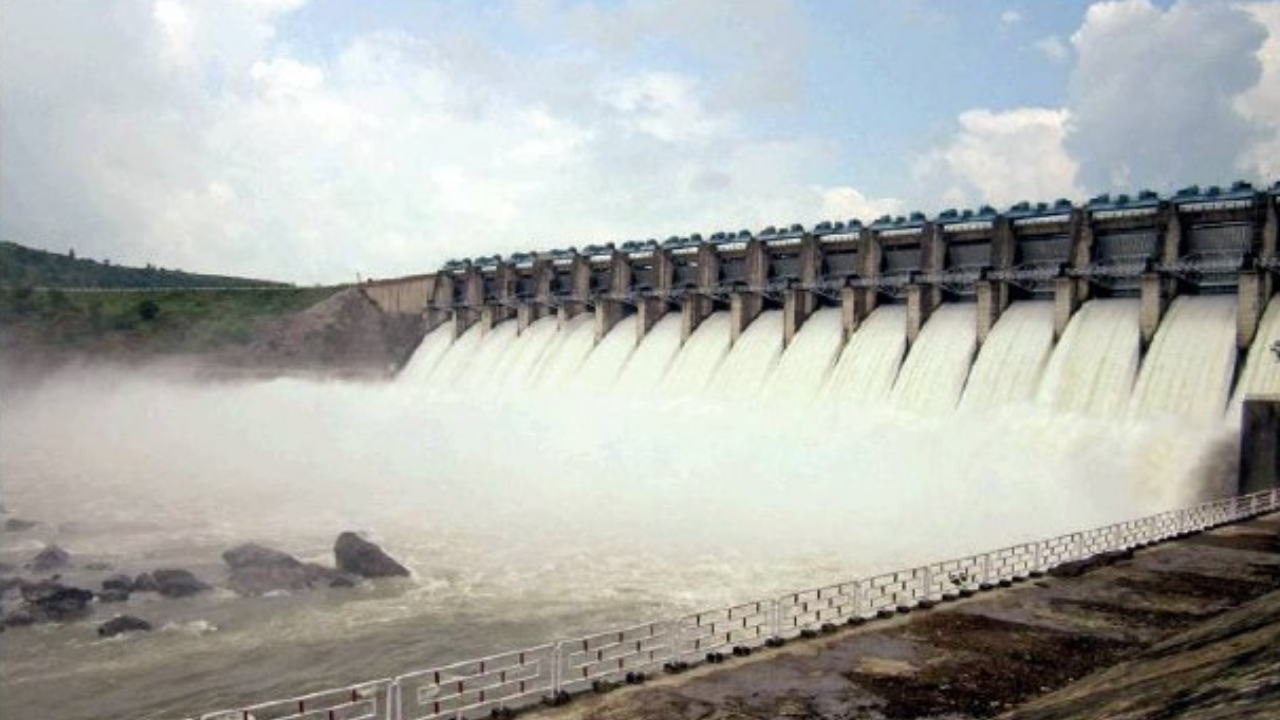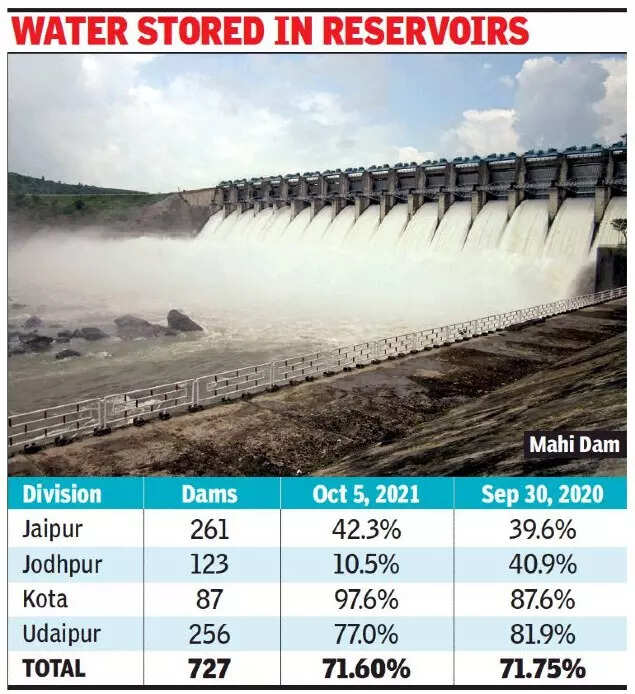
JAIPUR: Incessant rainfall in the past three weeks has filled the dams across Rajasthan to the levels of last year, saving the desert state from a drought-like situation.
Figures released by the state water resources department said that 727 dams in four divisions of Jaipur, Jodhpur, Udaipur and Kota filled up to 71.60% as of October 5, while it recorded the highest 71.75% on September 30, 2020. The figures of the remaining three divisions of Ajmer, Bharatpur and Bikaner are not available.

Jaipur division’s 261 dams have surpassed the water holding capacity of 2020 by 3% which means more water for irrigation. Kota division is leading with attaining 97% of the total capacity which is 10% higher than the previous year. Baran and Kota being only two districts where all dams—small and big has been filled 100% of their capacity making water available in abundance for irrigation and domestic use.
The entire state expects the Hadoti region was under the clout of severe drought till the beginning of the first week of September with almost all dams were filled less than 50% of the capacity. Other than dams in the Kota region, Ghambiri, Orai and Bassi dam in Chittorgarh, Mahi Bajaj Sagar in Banswara, Parwati Dam in Dholpur, Gudha Dam in Bundi, Galai Sagar and Devpura in Sawai Madhopur have filled 100% of its capacity.
In Jaipur district, Ramsagar Nevta and Kanota have been filled 90% and 80%, respectively, while the remaining dams are way below making the average occupancy of 20.62%.
TOI called up the secretary of the water resource department, Dr Prithvi Raj for his comments on the water in dams but he didn’t respond. Sources said that the department will hold a review of the rainfall to classify districts on the basis of water accumulated in the rainy season.
The review will decide which region/district will receive grants and aid accordingly. Rajesh Goyal, principal scientist, Central Arid Zone Research Institute, told TOI, “The unexpected rain in September is like hitting every ball out of the fence in the final overs. It has saved the state from additional financial burden, giving farmers hope of a good harvest, cattle herders promise of a constant supply of fodder, supply of water to household and industries a respite.”







